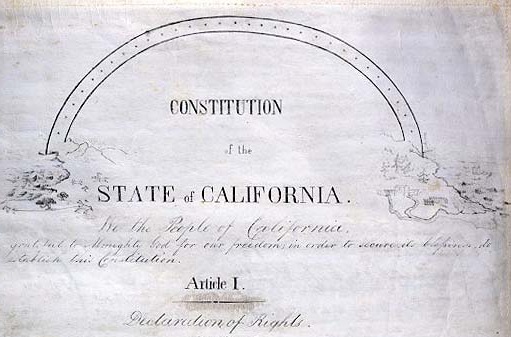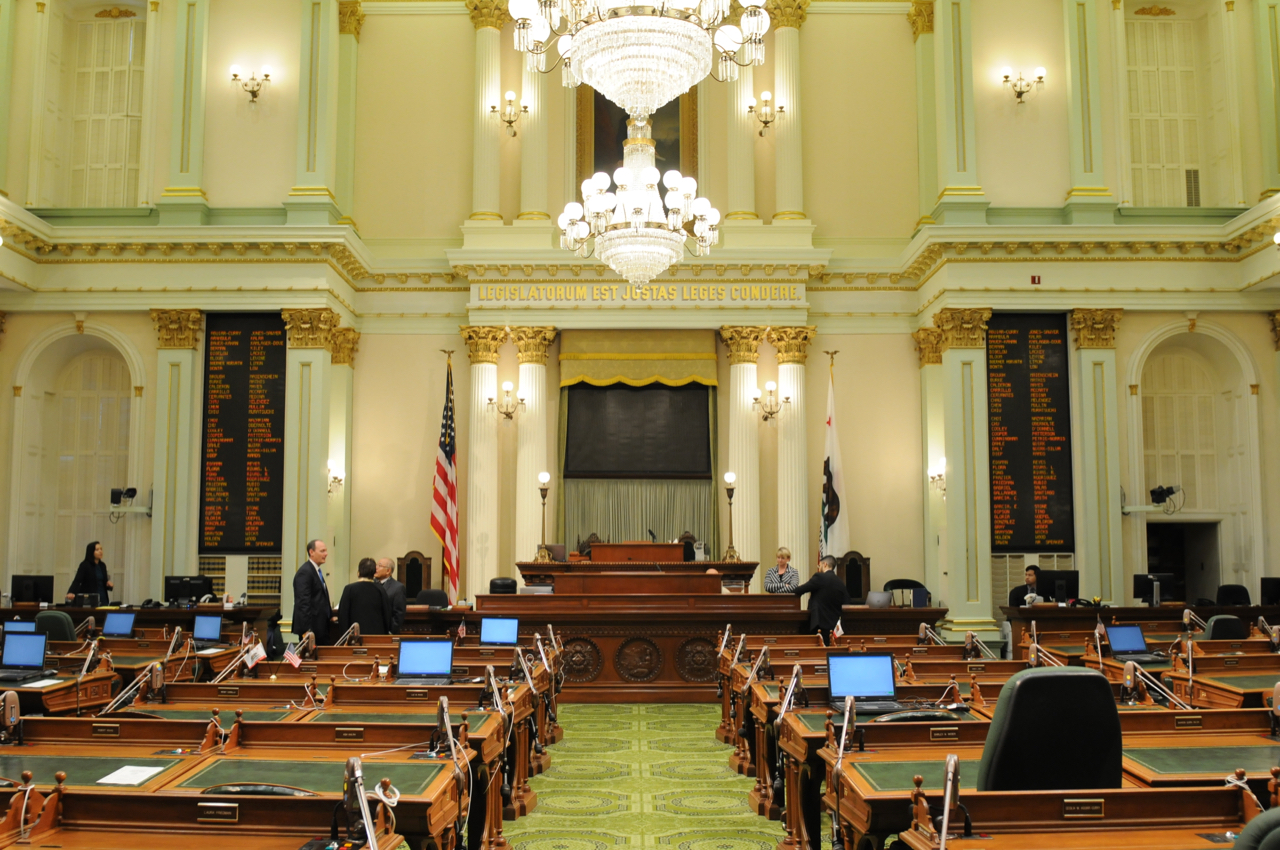
California Constitution. (Photo: www.sos.ca.gov)
California’s Constitution – Its Structure and Functions
It’s the ‘supreme law of the land’
By Chris Micheli, February 22, 2019 6:01 am
California’s Constitution was first adopted in 1849, just prior to California becoming a state in 1850. The current constitution was ratified on May 7, 1879. It is the governing document for the State, similar to the U.S. Constitution is the governing document for the country.
By most accounts, our state’s constitution is one of the longest in the world. In fact, the California Constitution has been amended or revised over 500 times.
While there are many provisions of the original constitution, the main reason that the state’s constitution is so lengthy is that there are numerous provisions adopted by the people by ballot measures at statewide elections. California’s signature requirement for placing measures on the ballot is one of the lowest thresholds of all states.
California’s Constitution authorizes a number of state agencies, such as the University of California (and Stanford University for certain property), the State Compensation Insurance Fund, and the State Bar of California. These provisions are intended to protect these institutions from governmental interference.
The state’s constitution also provides for counties and cities, as well as charter cities, whose local ordinances can be insulated from state laws. In addition, it specifies that cities are permitted to pay counties to perform governmental functions.
The California Constitution’s Preamble provides, “We, the People of the State of California, grateful to Almighty God for our freedom, in order to secure and perpetuate its blessings, do establish this Constitution.” In order to appreciate the length and complexity of the state’s constitution, the following are the Articles of the California Constitution:
ARTICLE I DECLARATION OF RIGHTS [Sections 1 – 32]
ARTICLE II VOTING, INITIATIVE AND REFERENDUM, AND RECALL [Sections 1 – 20]
ARTICLE III STATE OF CALIFORNIA [Sections 1 – 9]
ARTICLE IV LEGISLATIVE [Sections 1 – 28]
ARTICLE V EXECUTIVE [Sections 1 – 14]
ARTICLE VI JUDICIAL [Sections 1 – 22]
ARTICLE VII PUBLIC OFFICERS AND EMPLOYEES [Sections 1 – 11]
ARTICLE IX EDUCATION [Sections 1 – 16]
ARTICLE X WATER [Sections 1 – 7]
ARTICLE X A WATER RESOURCES DEVELOPMENT [Sections 1 – 8]
ARTICLE X B MARINE RESOURCES PROTECTION ACT OF 1990 [Sections 1 – 16]
ARTICE XI LOCAL GOVERNMENT [Sections 1 – 15]
ARTICLE XII PUBLIC UTILITIES [Sections 1 – 9]
ARTICLE XIII TAXATION [Sections 1 – 36]
ARTICLE XIII A [TAX LIMITATION] [Sections 1 – 7]
ARTICLE XIII B GOVERNMENT SPENDING LIMITATION [Sections 1 – 15]
ARTICLE XIII C [VOTER APPROVAL FOR LOCAL TAX LEVIES] [Sections 1 – 3]
ARTICLE XIII D [ASSESSMENT AND PROPERTY-RELATED FEE REFORM] [Sections 1 – 6]
ARTICLE XIV LABOR RELATIONS [Sections 1 – 5]
ARTICLE XVI PUBLIC FINANCE [Sections 1 – 23]
ARTICLE XVIII AMENDING AND REVISING THE CONSTITUTION [Sections 1 – 4]
ARTICLE XIX MOTOR VEHICLE REVENUES [Sections 1 – 10]
ARTICLE XIX C [ENFORCEMENT OF CERTAIN PROVISIONS] [Sections 1 – 4]
ARTICLE XIX D VEHICLE LICENSE FEE REVENUES FOR TRANSPORTATION PURPOSES [Section 1]
ARTICLE XX MISCELLANEOUS SUBJECTS [Sections 1 – 23]
ARTICLE XXII [ARCHITECTURAL AND ENGINEERING SERVICES] [Sections 1 – 2]
ARTICLE XXXIV PUBLIC HOUSING PROJECT LAW [Sections 1 – 4]
ARTICLE XXXV MEDICAL RESEARCH [Sections 1 – 7]
Like its federal counterpart, California’s Constitution is the “supreme law of the land” in this state, followed by state statutes, and then regulations promulgated by state entities. As with the federal level, the statutes and regulations cannot conflict with the constitution.
California’s Constitution is much more detailed than the federal constitution, which is focused on the three branches of government. The U.S. Constitution sets forth the three branches of government in its first three articles (i.e., Article I provides for the Congress; Article II provides for the President; and, Article III provides for the Judiciary).
On the other hand, the California Constitution sets forth the three branches of state government in its Articles IV (Legislature), V (Governor) and VI (Judiciary). California’s Constitution sets forth important personal rights in Article I of its constitution, such as the right to privacy (Article I, Section I) and, my personal favorite, the right to fish in public streams (Article I, Section 25)
The provisions of direct democracy (initiative, referendum and recall) are found in Article II. The state’s constitution goes on to cover the establishment of the state’s governance system, as well as other important parts of state government, such as the University of California, in Article III.
Our state’s constitution also covers a number of other subject matters. For example, in keeping with our concerns for the environment and our educational system, there are provisions related to water and marine resources, as well as education.
The California Constitution also has numerous provisions related to taxation and transportation revenues, and it even establishes labor relations laws as well as the state’s workers’ compensation system. While there are many statutes and numerous regulations affecting California’s workers’ compensation system, it is enshrined in the state’s constitution.
- Petitions and Responses in Arbitration - December 29, 2025
- Wage Garnishment in California - December 29, 2025
- Adoption of Unmarried Minors - December 28, 2025


